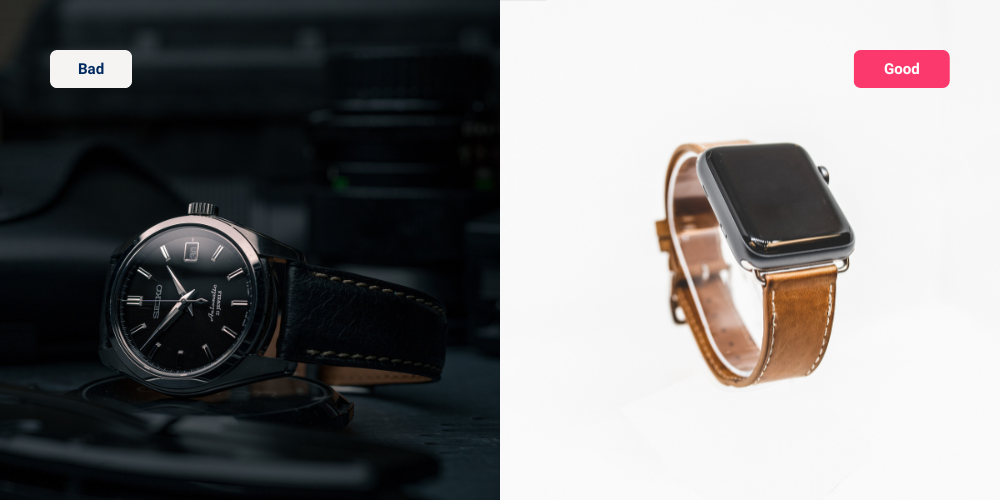E-commerce challenges of online product photos - visual vs reality

Have you ever been disappointed with an online purchase because the product looked nothing like it did in the photos? You're not alone. In fact, this is a common issue with e-commerce and one that retailers are struggling to address.
It's challenging to get an accurate representation of a product when all you have to go off of is a photo. And as more and more shoppers move towards online shopping, this problem is only magnified. How can retailers make sure that their products are accurately represented online?
In this blog post, we'll explore the challenge of online product photos and how retailers are working to address it. From visual effects to customer reviews, read on to learn more about the fight for accurate product photos.
E-commerce problem with online product photos
Product photos are one of the most important elements of an online store, yet they are often flaws. The problem with online product photos is that they can be misleading. The colors can be off, the lighting can be wrong, and the proportions can be distorted. This can lead to customers being disappointed with their purchase when it arrives.
To avoid this, it's important to use high-quality photos that accurately represent the product. Hiring a professional photographer is often worth the investment, as they will know how to take photos that accurately capture the product's color, size, and details.

Photos examples of visual vs. reality
When shopping online, customers are bombarded with product photos that are supposed to give them a realistic idea of what the product looks like.
However, in many cases, these photos can be misleading, showing the product in a much more favorable light than it is. This can be a problem for both customers and businesses, as it can lead to customer dissatisfaction and returns.
Businesses can do a few things to try to mitigate this problem:
- First, they should use high-quality photographs that accurately represent the product.
- Second, they should provide multiple views of the product from different angles.
- And third, they should allow customers to zoom in on the product to get a better look at it.
Despite these efforts, there will always be some discrepancy between the visual of the product and reality. That's just something that shoppers will have to keep in mind when shopping online.

Why this is a challenge for e-commerce
It's no secret that e-commerce has been booming in recent years. More and more people are shopping online for items large and small. But as e-commerce grows, so do the challenges businesses face selling products online.
One of the biggest challenges is product photography. It isn't easy to get accurate and realistic photos of products, especially when those products are being sold online. There are a few reasons for this:
Lighting:
Getting the right lighting for product photos is essential, but it's also very challenging. Natural light is often best, but it can be hard to control. For example, fluorescent lights can cause glare and reflection, while artificial lights can make colors look off.
Backgrounds:
The background of a product photo can make or break the shot. A busy or cluttered background will distract from the product, while a blank or boring background will make the product look uninteresting. Finding the right balance is critical.

Angles:
The angle at which a product is photographed can significantly impact how it looks in the photo. Shooting from too high or too low can distort the proportions of the product, while hitting from the side can make it difficult to see details.
A few other factors can contribute to poor product photography, but these are some of the most common challenges businesses sell products online. Overcoming these challenges takes time, patience, and practice. But with a little effort, you can take great photos.
Possible solutions to the problem
One of the biggest challenges facing e-commerce businesses is the disconnect between online product photos and reality. Product photos are often highly stylized and edited, while the product may not look perfect. This can lead to customer disappointment and returns.
There are a few possible solutions to this problem:
1. Use realistic product photos. Show customers exactly what the product looks like, warts and all. This way, there will be no surprises when they receive their order.
2. If you must use edited or stylized photos, be upfront about it. Let customers know that the photos have been retouched or staged, so they know what to expect.
3. Use multiple angles and views in your product photos. Customers should be able to see the item from all sides, so they know exactly what they're getting.
4. Provide close-up shots of any details or features that might be important to customers. This way, there's no confusion about what they're ordering.
5. Allow customers to upload their photos of the product in use. This can help give potential buyers a better idea of how the product actually looks in real-life situations.
6. If you want to use product photo editing tools, choose those that produce a natural, sales-friendly effect. One of the best such tools is Deep-image.ai. AI-based photo enhancer optimized for product photography. You will be able to upscale images to a desired resolution, remove background, or replace it completely. You will easily crop images and put objects in the center of the image with ease. All this can be done in bulk up to 50 images at a time for a very affordable price far lower then having this done by a professional.

Conclusion
It can be frustrating when you order an item online only to find it looks completely different in person. This is especially true for products like clothing and accessories, where color and fit are so important.
While it's impossible to guarantee that every online product photo will perfectly match the actual item, businesses can do a few things to minimize the discrepancy between visuals and reality.
By taking these steps, businesses can make sure that their customers are better informed about what they're buying — and less likely to be disappointed when they open their packages.

